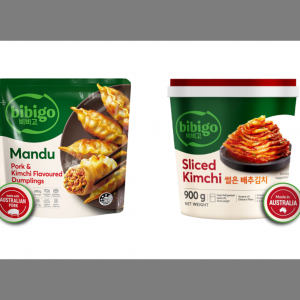Rice has always been at the heart of Korean culture. It is threaded into its language and into Koreans’ sense of home, family and national identity. It is associated with healthy eating and wellbeing and often serves as a social bridge connecting people. In fact, the theme of food in general is very meaningful in Korean culture. ‘Let’s have a meal together sometime,’ is a common greeting, and eating heartily and nutritiously is so important that skipping meals can elicit concern from friends and family.
In modern, busy Korean society, people expect everything to be fast, convenient and high in quality all at once. It is no wonder, then, that instant rice has quickly risen to become a staple food and a popular substitute for traditional home-cooked rice. For most Koreans, the brand of choice is CJ CheilJedang’s Hetbahn. Launched in 1996, Hetbahn has long been the instant rice market leader and a regular fixture in kitchens all around the country.
But where did Hetbahn start? What is the story behind it? Today, CJ Newsroom dives into the history, technology and brand philosophy of Hetbahn to answer some common questions customers have about this classic microwavable rice.

What does the word ‘Hetbahn’ actually mean?
‘Hetbahn’ means ‘freshly cooked rice,’ with ‘Het-’ meaning ‘fresh’ and ‘-bahn’ meaning ‘rice’. Specifically, it references rice that is milled and cooked on the same day, which makes for a tastier dish and is the process Hetbahn uses for its own rice. While ‘Hetbahn’ is, strictly speaking, a name that refers only to the brand itself, the resonance of the product is so strong that, in Korea, the word ‘Hetbahn’ is often synonymous with instant rice in general, regardless of brand and manufacturer.
What are Hetbahn’s origins?
Hetbahn was launched in 1996 by CJ CheilJedang. At the time, Korean society was changing and modernizing, with more single-person households and more women getting employed. There was a growing need for nutritious, quality convenience food that tasted great but was easy to prepare.
What challenges did the young brand face?
To help the brand flourish, CJ CheilJedang had to overcome some aspects of public perception. Despite the changing roles of women in society, there was still pressure on mothers to prepare home-cooked food. Some mothers would have felt a little guilty at the idea of buying instant rice, instead of preparing it from scratch. In consideration of this, CJ CheilJedang launched a savvy TV advertising campaign starring Kim Hye-ja, a veteran Korean actress famous for her roles as mothers. In the commercials, Kim Hye-ja positioned Hetbahn as a perfectly reasonable and natural choice for mothers who cared about their cooking. In fact, Kim had done the same for CJ CheilJedang’s DASIDA seasoning powder in a 1980s TV commercial run, to similar success. With the help of a marketing campaign that challenged traditional perceptions of convenience food, Hetbahn took off. In 1997 it saw profits of approximately 2.8 million USD. By 2000, this had increased to 14.8 million USD.

Hetbahn says it does not use any preservatives. With a shelf life of nine months, how is this possible?
It is true that Hetbahn does not use preservatives. Hetbahn achieves this impressive shelf life naturally, through its rigorous health and sanitization standards. In the factory, the entire production process takes place in a place called a ‘cleanroom,’ not dissimilar from the conditions under which semiconductors are manufactured. The cleanroom has emphatically high cleanliness standards, which keeps it free from micro-sized particulates and bacteria. This leads to a naturally long shelf life.
So, there are no artificial preservatives, but what about the plastic that gets microwaved? Is there a risk of endocrine disruptors from heated plastic?
Hetbahn’s packaging is made with polypropylene. This is such a safe material that it is used to make children’s toys and even baby bottles, so it is safe to microwave Hetbahn.
The story continues in the next episode – find out more about Hetbahn’s unique packaging and industry-leading quality in part two of this series.











